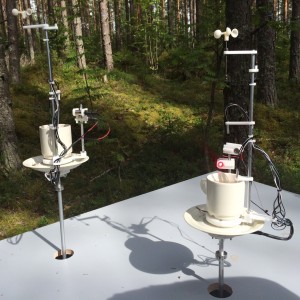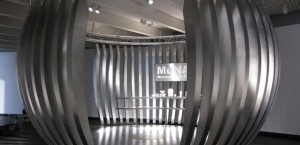What does contemporary art have to do with science?

Is this an aerosol measurement device? (Photo: T. Jokinen)
Science and especially scientific instruments can be intimidating for people who are not familiar with them. Art can be a means of softening the image of science. Rising and falling teacups look more cute than scary. Maybe they can help in easing the mistrust that people have towards (climate) scientists.
In addition to exposing general public to science by means of art, it can also be beneficial to expose scientists to art. Art can make us think differently. It can make us question ourselves: why are we here and what are we doing? “What is bad data and what is good data?” asked Agnes Meyer-Brandis. Are we measuring data or measuring nature?
At the summer school on the Formation and Growth of Atmospheric Aerosols, which is currently going on in Hyytiälä, we did an excursion to the Serlachius art museum in Mänttä which has become hugely popular. (Located in a town of about 6000 inhabitants, it has attracted over 50 000 visitors since the opening of a new wing 2 months ago). My favorite exhibition was Museum of No Art by Riiko Sakkinen: a dystopic museum that has just walls and a shop, but no art. The same way we need to constantly take care that we do not loose the contents of our science.

